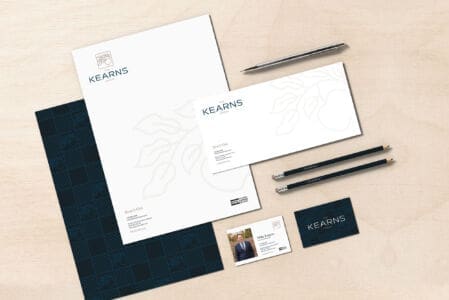Building a Gated VS Ungated Lead Generation Strategy

As an agent with a marketing strategy in place, you’re always trying to get leads – without leads and a lead building strategy you, wouldn’t have much of a business; but to see success in your lead building strategy, you should always start by identifying what a lead actually is to you and your business.
Is it enough for you to get a name and a physical address? Is it enough for you to get a phone number or an email address? Or would you rather have the complete contact information of a person that reaches out because they want to work with you and your business for their next real estate transaction?
Chances are, it’s the latter…
When it comes to building leads, quality over quantity is key (and usually everyone’s preference). And in a lead generation strategy that prioritizes quality over quantity, one of the most important goals is to focus building a strategy where people give you their information and reach out because they want to, not because they have to.
That’s where gating and ungating your website’s content, with the goal of collecting contact information, comes in.
Gating is where you block certain parts of content or information on your website, and only make it accessible by providing something in return (like an email address, phone number, or some other contact information); and ungating is where you provide content or information on your website freely accessible without anything in return.
And while you could choose to completely gate or to completely ungate your content, a more effective strategy is to do both, where it makes sense to, based on what your goals are and what your audience is looking for.
★ Want to learn more about real estate lead generation? Have a look at these poss:
- What To Do If You Have a Real Estate Lead Generation Problem
- Why Personal, Targeted Marketing Means Better Real Estate Leads
- Creating a Content Strategy Based On Emotional Search Intent (To Get Better Leads)
When to Gate Content
In order to gate content effectively, you must be able to provide something of value, that someone is willing to trade their contact information for, and that they can’t easily get somewhere else.
One of the best places to gate your content is around access to guides or other downloadable resources, that your audience is interested in and sees as valuable. Most people would be willing to provide their contact information for a seller’s guide or buyer’s guide, especially if they can’t get it anywhere else.
And, the more specific you make it to their situation, the more they’re likely to give you their contact information for it.
For example, if someone is buying a home, they will probably give their contact information for your Home Buying Guide; but if someone is going through a difficult time, like a divorce or separation, and isn’t sure where to start, they’re highly likely to give their contact information for your Everything You Need to Know About Divorce and Real Estate Guide, because it specifically addresses their needs.
Of course, you could leave your downloadable resources and guides ungated if you want to, and while this makes it available to your target audience more freely and easily, it also leaves it open to competitors (and anyone else) to download as well – plus, you’d miss out on an ideal opportunity to get your target audience’s contact information by providing it ungated.
★ Want to learn more about downloadable resources (and download some of ours)? Have a look at these posts and links:
- Building Downloadable Resources Into Your Marketing Strategy
- Building a Lead Generation Strategy Through Education
- Download Our Quarterly Real Estate Marketing Trend Report
- Download Our Inbound Marketing Guide for Real Estate Agents and Teams
- Download Our Content Strategy Guide for Real Estate Agents and Teams
When Not to Gate Content
To build a quality vs quantity lead generation strategy, unless you have something else outside of a downloadable resource that’s valuable and unique, everything else on your website should be ungated.
That’s because ungated content creates more opportunity for you to appear more knowledgeable, trustworthy, and authoritative to your target audience, by making sure that all of your content is readily available to them, when it’s likely to be most impactful and useful.
In real estate marketing, one of the most common places to gate content is with MLS listings, where someone will be forced to enter their information to be able to see some specific details for the listing (like price or location) or even the entire listing itself.
And while this may work to get the contact information for a few people, it doesn’t help get the contact information of someone within your target audience that actually wants to work with you – they just want to see the listing details.
In most cases, people that enter their contact information to see a listing are less-quality leads, as they probably ended up there randomly, just by searching for homes for sale in an area, and there hasn’t been any trust built with where they’ve landed; and even if they do enter their contact information, it’s likely to be fake or a throwaway account.
Or, they might just leave entirely, as when it comes to MLS listings, they can easily go to a lot of other, more well-known websites (like Realtor.com/.ca) that are built entirely around searching for listings and have all the listing information publicly accessible, immediately, for free, and without any commitment of entering their contact information – and if they are really serious about searching for a property, they’ll usually have an account set up on one of those websites in the first place.
Outside of MLS listings, unless you have a content strategy that’s very unique, specific, and worth someone trading their contact information for, it’s better to provide everything, up front, without gating it.
That approach allows more people to interact with your content, and creates more opportunities for you to prove your expertise and authority in your market and to your target audience – which gives more people more reason to reach out to you when the time is right.
★ Want to learn more about building a content strategy? Have a look at these posts:
- Writing Successful Real Estate Content that Converts
- Creating a People-Powered, People-First Content Strategy
- Creating an Evergreen Real Estate Content Strategy
Even if you want someone’s contact information, to build a successful real estate lead generation strategy that gets results, you need to put the needs of your audience ahead of your own marketing needs, and knowing when to gate and ungate content is a key part of that.
Want to get better, more qualified leads and build your authority? Our Inbound Marketing Guide is a walkthrough of the overall philosophy of inbound marketing, why it’s effective, and how you can build it into your own real estate marketing strategy to get better marketing results.





















